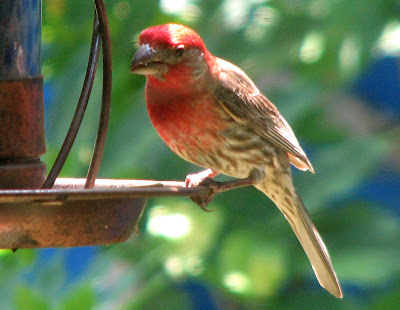


Like most of the other birds, this Red-bellied spends a lot of time with its beak open, panting in the heat. (Yesterday was the 7th consecutive day over 100F.)

Jeff Mohamed blogs about birds and other wildlife in the Houston area - and occasionally farther afield.





At the park, the first birds to catch my eye are three Common Nighthawks circling and calling out over the cricket pitches. My camera isn't well-suited to catching birds in flight but I eventually manage to get one recognizable shot.








Black-bellied Whistling Ducks
By 9:00 a.m. it's already pretty hot and so I head home. All in all, not a bad 90 minutes of birdwatching.


 I don't think I've ever noticed before just how long Stilts' wings are.
I don't think I've ever noticed before just how long Stilts' wings are.




Now we're hoping that they will go back to being among our most regular visitors - and to ruling the roost in our yards.

Three of the birds looked perfectly at ease...


and chased after the parents whenever the latter returned with food.
The fourth, presumably the runt of the litter, seemed to be very unsure of itself and sat totally still, waiting for the parents to come to feed it.
Still, no doubt this bird, too, will soon be confident of itself and at home in its new surroundings.
It will be interesting to see how long it will be before the young birds are able to fend for themselves.


I stepped back and checked out every inch of the roof that I could see. No luck. I checked out the grass around the basketball court. Still no fourth bird.
I turned around to leave and found myself literally face to face with the missing bird. He was sitting motionless on a branch no more than four feet away from me.

As I took a photo, one of the adult birds flew to the top of the tree and positively screamed at me. So, not wanting to panic the parent any more, I moved away and went back to class.
P.S.
Colleagues tell me that another pair of Western Kingbirds has a nest in one of the college parking lots.
.







